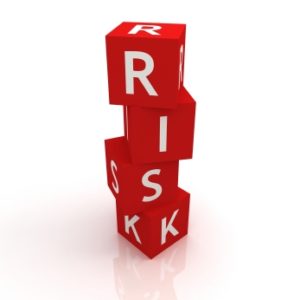Ben Kunes
Safe Money Retirement Group
Do You Know And Understand Your Risk Tolerance
Risk is the exposure to loss.

The first thing to consider is What is Risk?
Risk is the exposure to loss. Of course, a loss can be as simple as losing your car keys or as complicated as your house burning down. What does risk mean when it concerns your retirement accounts. How do you determine your risk exposure?
When considering risk decisions regarding retirement accounts, the two most important factors are your current age and, when the money will be needed, your time horizon. For example, if you are 30 years old and plan to retire at 70, you have a longer window for recovery from any risk exposure from losses. But if you are 60 and plan to retire at 65, your approach must be far more conservative, simply because your time horizon is shorter.
As you age, you have fewer years to recoup market losses. So gradually reducing the amount of risk in your portfolio over time has merit. Beginning moving to more stable and safe options as we age can help remove the risk factor on a portion of your accounts. Many people use annuities to accomplish this and slowly add to their annuity accounts as the time period to retirement shortens.
Could your retirement account absorb short-term losses? This is the question at the core of any discussion of risk tolerance. Some people can ride through turbulence in the financial markets with a shrug, while others suffer headaches. Many people put in writing their concerns and goals to have a roadmap of where they have been and where they are going. If an advisor is helping you, they will conduct a fact-finding session to help you understand where you are and where you are going. It is essential to keep this updated since changes are always coming.
The four risk factors:
- Market
- Liquidity
- Marketability
- Inflation
The most obvious one is market risk. One common measure of market risk is standard deviation, which tracks the variance of an investment’s return from its mean return during a stated period. Adding and subtracting the standard deviation to a mean return shows the range of returns that may be anticipated 67% of the time. If an investment has a high standard deviation, it means that its returns have varied from the mean to a greater extent than one with a low standard deviation. Volatility is designated with standard deviation; how much does an asset’s value fluctuate?
Liquidity risk can emerge significantly, especially as you age. How assessable are your assets in their current investments?
Marketability risk is the measure of tradability. If you can sell an investment quickly, its marketability risk is lower. If you can’t, its marketability risk is higher.
Inflation risk. This is the risk of your purchasing power lessening over time. If your investments have no way of adjusting to inflation, future purchasing power will be affected. Suppose yearly inflation increases to 3% soon. That means that a year from now, you will need $103 to buy what you bought for $100 a year earlier. In ten years, you will actually need $134.39 rather than $130 to buy what you bought a decade back because of compound inflation. Its effect is just like compound interest.
Consider all aspects of these four factors when considering your asset allocations, and remember: Everyone runs to safety eventually.
Your time period will be determined based on your specific situation.

Ben Kunes
Safe Money Retirement Group
6657 Winding Creek Way
St. Louis, Missouri 63129
ben.kunes@retirevillage.com
(314) 740-6278

Looking For Answers?
Download our Safe Money Guide and learn more about safe retirement options that can help you achieve your retirement goals safely - FREE!


